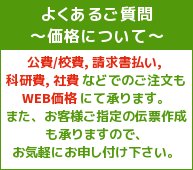Basic Oka Theory in Several Complex Variables
出版済み 3週間でお届けいたします。
Series: Universitext Author: Noguchi, Junjiro Publisher: Springer ISBN: 9789819720552 Cover: PAPERBACK Date: 2024年07月 DESCRIPTION This book provides a new, comprehensive, and self-contained account of Oka theory as an introduction to function theory of several complex variables, mainly concerned with the Three Big Problems (Approximation, Cousin, Pseudoconvexity) that were solved by Kiyoshi Oka and form the basics of the theory. The purpose of the volume is to serve as a textbook in lecture courses right after complex function theory of one variable. The presentation aims to be readable and enjoyable both for those who are beginners in mathematics and for researchers interested in complex analysis in several variables and complex geometry. The nature of the present book is evinced by its approach following Oka’s unpublished five papers of 1943 with his guiding methodological principle termed the “Joku-Iko Principle”, where historically the Pseudoconvexity Problem (Hartogs, Levi) was first solved in all dimensions, even for unramified Riemann domains as well. The method that is used in the book is elementary and direct, not relying on the cohomology theory of sheaves nor on the L2-∂-bar method, but yet reaches the core of the theory with the complete proofs. Two proofs for Levi’s Problem are provided: One is Oka’s original with the Fredholm integral equation of the second kind combined with the Joku-Iko Principle, and the other is Grauert’s by the well-known “bumping-method” with L. Schwartz’s Fredholm theorem, of which a self-contained, rather simple and short proof is given. The comparison of them should be interesting even for specialists. In addition to the Three Big Problems, other basic material is dealt with, such as Poincare’s non-biholomorphism between balls and polydisks, the Cartan-Thullen theorem on holomorphic convexity, Hartogs’ separate analyticity, Bochner’s tube theorem, analytic interpolation, and others. It is valuable for students and researchers alike to look into the original works of Kiyoshi Oka, which are not easy to find in books or monographs. TABLE OF CONTENTS 1 Holomorphic Functions 2 Coherent Sheaves and Oka’s Joku-Iko Principle 3 Domains of Holomorphy 4 Pseudoconvex Domains I - Problem and Reduction 5 Pseudoconvex Domains II - Solution

|
||||||||||||||||||||||||||||||||||||||||||||||||
























